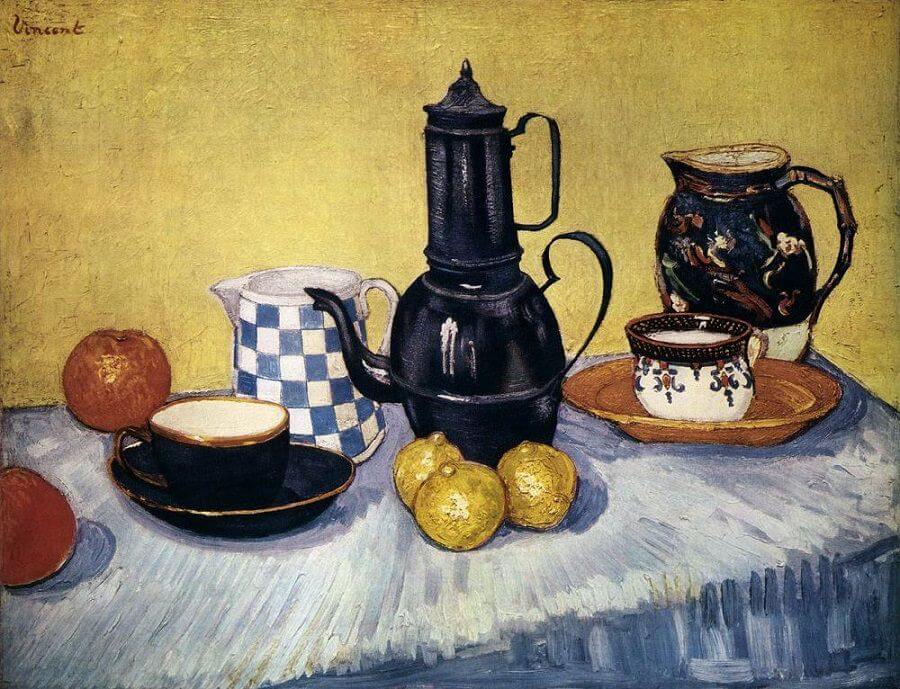Still Life with Coffee Pot, 1888 by Vincent van Gogh

In his Dutch years Van Gogh had employed a tonal palette typical of the Barbizon painters and some of the Hague School artists. But in 1884-5 he encountered a new theory of colour in the books and articles he was reading about the French painter Eugene Delacroix. From these texts Van Gogh derived the thesis that one of the distinguishing features and great discoveries of recent art that made it 'modern' was the use of complementary and contrasting colours in place of tonality and chiaroscuro. The basic message of his reading was that each primary colour - red, blue, yellow - has a complementary colour composed of a mixture of the other two. The complement of red is green; of blue, orange; of yellow, violet. Shadows cast by an object should include the complementary colour of the object. Complementaries are also used to heighten and intensify the brilliance of colour.
In his ambition to be modern Van Gogh adopted these theories, but without a sophisticated understanding of them or a sound technical foundation as a painter. He applied them crudely and programmatically, though often with unexpectedly powerful and original effects. During the spring and summer of 1888 Van Gogh corresponded regularly with Bernard, giving his friend reports on work in progress and describing his colour experiments such as this still life. The complementary pairs of blue and orange, yellow and violet can be easily recognized in this painting, and from the colour notes added to a sketch of it included in a letter to Bernard it is clear that the red-green pair was also employed. The background, which in reproduction appears yellow, was in fact a greenish tone. Around the picture Van Gogh has painted a red border, which serves to heighten and emphasize that green. The practice of painting a border of complementary colour onto the canvas was initiated by Seurat, who also employed modern colour theory.




















